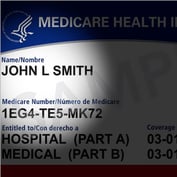Forrest Gump could have been an insurance agent, with his famous line “you never know what you’re going to get.”
Medicare Advantage and Part D agents especially can relate after five years of Annual Election Period (AEP) surprises, CMS changes, and now health care reform.
Each year, as the AEP approaches, you truly never know what you’re going to get from the carriers or CMS. But now that it’s here, we have a pretty solid idea of what 2011 is going to look like as far as products, benefits, and regulatory changes are concerned. So here are four big changes you can expect in 2011 to Part D.
Increased coverage in the gap
Perhaps the most significant change in 2011 will be the increased coverage many seniors will enjoy in the donut hole or coverage gap. In 2010, seniors who reached the gap received a $250 rebate. In 2011, name-brand drugs will be 50 percent off in the coverage gap, and a 7 percent discount applies to generic drugs in the coverage gap.
CMS has confirmed that 234 drug manufacturers that sell drugs covered by Part D have signed a pledge to provide brand-name drugs half off to seniors who fall into the coverage gap. The drug manufacturers on the list represent 99.9 percent of all drugs covered by Medicare Part D in 2009, according to CMS.
This is big news for your clients, but don’t assume they know anything about it.
According to a survey conducted by KRC Research for the Medicare Today coalition, just 20 percent of Part D beneficiaries are aware that name-brand drug costs will be cut in half next year once in the coverage gap. In addition, 72 percent said they didn’t know that the new health care reform law incrementally closes the donut hole each year after 2011 until the gap is eliminated.
Carriers themselves will offer more gap coverage in 2011, as well. According to a study by Avalere Health, three times as many plans will offer gap coverage for brand name drugs as in 2010. In all, 106 PDPs (10 percent of the market) will offer gap coverage for “few” or “some” brand name drugs, up from just 35 PDPs (2 percent) in 2010. CMS defines “few” as greater than 0 but less than 10 percent of formulary drugs, and “some” as greater than or equal to 10 percent, but less than 65 percent of formulary drugs.
Closing the coverage gap couldn’t come at a better time for the 78 million Baby Boomers poised to begin aging into Medicare in 2011. Choosing the right Part D plan won’t be as daunting now knowing that the out-of-pocket expenses are limited. As the coverage gap is closed in coming years for seniors, expect to see premiums and/or co-pays rise.
However, it remains critically important for agents to review the plan formulary. Utilizing carrier tools, Medicare.gov or other quoting tools provided by independent marketing organizations (IMOs) will be important to ensure the client’s drugs are covered by the plan.
Consolidation
The number of stand-alone prescription drug plans (PDPs) contracted with CMS will decline for the fourth consecutive year in 2011. This is a result of CMS’ “meaningful difference” policy, which says that plan sponsors cannot have more than one basic and two enhanced plans per region.
Some of the most popular plans in the country are going away in 2011. The trend of large employers dropping retiree prescription drug coverage continues and many carriers will offer two instead of three plans. The elimination of those plans, plus many others, will result in more than 3 million beneficiaries looking to switch plans.








 April 19, 2011 at 08:00 PM
April 19, 2011 at 08:00 PM










